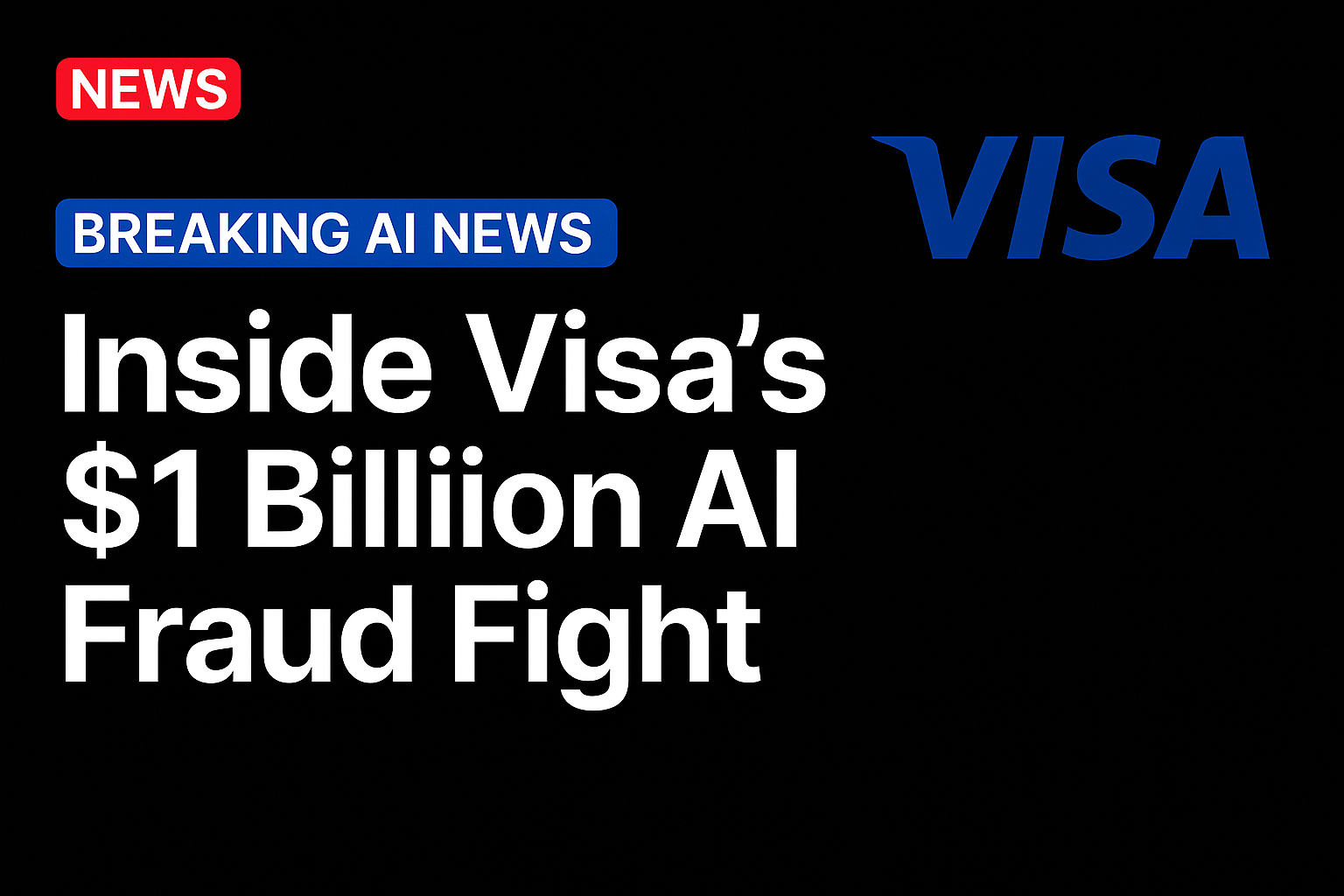Fraud is moving fast, and artificial intelligence is both the weapon and the shield.
As scammers harness AI to automate attacks and personalize deception, the defense must match their sophistication.
That’s the challenge Visa met with a $1 billion fraud-disruption milestone in September, an achievement marking the company’s efforts to intercept attempted scams before they reach consumers.
“The only way to fight bad AI is with even better AI,” Michael Jabbara, senior vice president and head of payment ecosystem risk and control at Visa, told PYMNTS in an interview.
Fraudsters “use these tools to really expand their scope so they can target more victims than ever before and to do so in a much more rapid way … because they can automate a lot of the tasks associated with sending out the emails or fake websites,” he said.
Advertisement: Scroll to Continue
For Visa, the counterattack comes through deploying machine-learning models to detect when these scams are being executed. Visa’s efforts are scaling globally, Jabbara said, “because we have that intelligence that we can connect and start to see what the scammers are up to and mitigate that.”
Scams That Scale and Why They Work
The new generation of fraud is as psychological as it is technical.
“Scammers are keenly interested in human nature and ways that they can exploit it for their illicit gain,” Jabbara said. “They’re great marketers.”
Visa’s team has cataloged a rise in scams tapping emotional and aspirational triggers. One example is the online dating scam, where targets receive a background check link from a supposed match.
“It asks for payment information ‘just as part of the setup process,’ but what actually ends up happening is that your account is enrolled in a whole bunch of billing subscriptions … charging you for several months,” Jabbara said.
Another fast-growing scheme is the small business scam, which preys on entrepreneurs seeking marketing or registration services.
“They create very convincing businesses that promise end-to-end support … but then the services are never rendered,” Jabbara said. “If you have personal data or funds in your account, you are going to be a target.”
These scams highlight the shift toward AI-driven personalization, or the use of data and language models to tailor lures by demographic, location or recent behavior, he said.
Beyond Detection: Dismantling Fraud Networks
Visa’s data-science approach is built around integration, not isolation, Jabbara said.
“Taking a siloed approach to data just doesn’t work,” he said. “You really need to bring multiple datasets into a cross-correlational framework to get a holistic view of what the scammer infrastructure looks like.”
That includes transaction data, fraud reports, hosting domains and law-enforcement intelligence all linked to expose the scaffolding of criminal networks.
“A lot of the focus is on detection, but just as critical is how you actually dismantle these scams,” Jabbara said. “That’s where you run into the bottleneck of human intervention.”
Visa is investing in agentic AI to “‘burn down’ caseloads so that you are disrupting that infrastructure as quickly as possible,” he said.
Still, data alone can’t solve the problem.
“Data in the end is just a tool,” Jabbara said. “It needs a structure where you can harness insights … and you need experts, these cross-disciplinary experts.”
Human analysis remains central to training models, defining scam taxonomies and shaping responses.
Building a Holistic Defense
The fraud ecosystem mirrors the consumer journey, only inverted, Jabbara said.
“Most times, victims are exposed to these scams through a malicious text, email or ad,” he said.
That means telecoms, digital platforms and hosting providers play critical roles at the top of the funnel. As scams move downstream, “financial institutions and payment networks like Visa come into play because we can see that money … and where it is moving,” Jabbara said.
Combining those touch points “creates holistic cases that we can refer to law enforcement,” allowing investigations to span from social media entry points to ultimate fund destinations, he said.
This multi-stakeholder model underpins Visa’s Scam Disruption and Integrity Risk programs, which are the foundation of the billion-dollar milestone notched in September. The model also continues to guide the company’s public-private partnerships with regulators and global financial institutions.
Fraud Has No Borders and Neither Does the Defense
“Fraudsters are very much adaptive, but they also look to scale,” Jabbara said.
They test schemes in one market and quickly replicate success elsewhere. Visa’s global network is positioned to intercept those migrations, he said.
“We can see a scam type originating on one side of the world, break it down into its core taxonomy, create detections, and if it migrates, we can quickly identify it and work with FIs and cardholders to prevent losses,” Jabbara said.
That worldwide reach is reinforced through public-private partnerships that transcend jurisdictional limits.
“These criminal organizations are transnational,” he said. “The only way that we’re going to be successful is if we allow not only for the intelligence to be exchanged across geographic boundaries, but also for best practices and ways to truly disrupt these organizations.”
Ultimately, he said, “the competition when it comes to fraud and scams is not between entities; it’s us versus the scammers.”
Source: https://www.pymnts.com/




